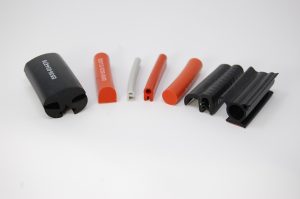What are your manufacturing costs for rubber seals and gaskets? Buying rubber materials and fabricating them in-house may seem cost-effective, but are you sure you’re really saving money? For that matter, are you sacrificing quality, consistency and customer satisfaction for a cost savings that might not exist?
Manufacturers can know their true costs by analyzing the full scope of their production operations. There are three major categories of cost to consider:
- direct labor
- direct material
- manufacturing overhead
If any of these manufacturing costs are incorrect, your financial statements may under-report inventory value and the cost of goods sold. Let’s take a closer look at what you need to consider – and compare what you may be doing now with what you can get from Elasto Proxy.
Direct Labor
Direct labor is the cost of the wages of the workers who are physically involved in converting rubber materials into finished parts. This cost category doesn’t just include time spent on activities such as cutting lengths of rubber and bonding finished gaskets. Direct labor also includes the cost of retrieving rubber materials from the warehouse, moving them to your production area, setup and cleanup.
Direct labor includes the cost of rework, too. Rubber seals and gaskets that are hard to cut increase the chance of human error. Workers may struggle to cut clean circles, straight edges, small through-holes for fasteners, blind holes for raised fastener heads, or chamfers with 30° or 45° angles. By contrast, rubber water jet cutting is automated and can create these and other features with ease.
Direct Materials
Direct materials are the cost of the materials that become part of the finished product. With door seals, for example, direct materials are the lengths of rubber that workers cut and the bonding material (such as the glue) that’s used. There’s also probably more waste than you realize, however. Across many jobs, mis-cut lengths that end up in the trash can lead to significant overages.
The way that workers cut sheet materials can contribute to waste, too. Tracing a pattern may seem simple, but the results are inexact. Plus, manual cutting doesn’t support the nesting of parts. By contrast, water jet equipment supports parts nesting for maximum material yields. Your company may not have this equipment in-house, but Elasto Proxy provides water jet cutting services.
Manufacturing Overhead Costs
The final category of costs, manufacturing overhead (MOH), is also part of your full financial picture. These are manufacturing costs that you can’t directly attribute to rubber seals and gaskets, but that affect the total cost of production. Examples include the salaries paid to maintenance personnel, manufacturing managers, materials management staff, and quality control personnel.
Finally, you’ll need to consider the relationship between direct labor, direct materials, and MOH. If you’re cutting seals and gaskets in-house, your labor rates need to account for the salaries of quality control personnel who check the finished gaskets. If you’re ordering extra materials, then your purchasing, receiving, and warehousing costs are also higher.
Know Your True Manufacturing Costs
It takes time and effort to know your true manufacturing costs, but Elasto Proxy can help you with this process. Our solutions providers can also share real-world examples of how companies like yours are saving time and money with our combination of custom fabrication and value-added manufacturing services like design assistance, material selection, kitting, custom packaging, and warehousing.









